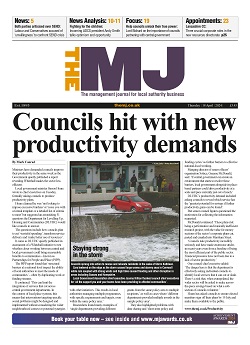As the prospect of a vaccine raises hopes that life might return to some normality by next spring, so thoughts turn not only on how to repay the huge cost of bailing out the economy, but also to funding ongoing demographic pressures in health and care.
Think-tank, the Resolution Foundation (RF), has put in an early contribution to the debate by proposing a raft of £40bn in new taxes including a health and social care levy raising a net £17bn to both reduce borrowing and meet rising demand, starting no earlier than 2024/25.
At a webinar last week to discuss its report, Philip Hammond, chancellor from 2016/19 described as ‘fairyland’ the idea that the Government would start to reduce borrowing anytime before the next General Election, due in 2024.
He added: ‘Borrowing will take the strain for the next four years and only after a General Election will we see the issue addressed.’ In effect, cutting the ballooning £2tr of debt will wait until the financial year 2025/26.
The RF study, Unhealthy finances: how to repair the damage to the public finances from the coronavirus crisis, also published last week, puts a health and social care levy at the centrepiece of its suggested £40bn of annual tax increases.
It says a flat-rate 4% levy paid by all taxpayers, including pensioners, on earnngs above £12,500 would raise £32bn of which £6bn could be channelled straight to social care. This would be accompanied by a 3% cut in national insurance (NI) contributions, meaning employees earning below £19,500 would be better off than in the current system.
As this would cost £14bn, the net income from the levy reduces to £17bn minus the £6bn for social care. The report says that ‘given that the proximate cause of the fiscal crisis has been a public health crisis, and that health and social care needs remain long-term pressures on tax requirements, it seems appropriate that a key part of the solution should be a health and social care levy.’
It adds: ‘A health and social care levy should extend at least to all of the other forms of income covered by income tax, including: dividends, rental income, royalties and savings interest. To avoid exaggerating existing challenges created by capital gains attracting lower rates of tax, the levy should be applied to capital gains as well.’
The report proposes that eventually NI could be phased out altogether, being replaced by the levy.
Lord Hammond however was sceptical about such a levy, telling the RF webinar that increasingly it would be diverted to deal with demographic pressures, therefore no longer helping to plug the deficit, would rise exponentially and would soon face demands to be ringfenced. Furthermore, it would make the UK less competitive internationally as the tax would apply to all forms of income.
The flipside is that, like current NI, the levy would become part of general taxation and still not fully fund health and care.
The levy was a core part of a raft of tax rises proposed by the RF report which says that fiscal consolidation will occur through tax increases rather than spending cuts. It envisages that £40bn a year consolidation is realistic, though Lord Hammond warned that ‘you must be careful about austerity fatigue as the public weary of it.’
Other tax rises proposed in the report are a pandemic profit levy of 10% on ‘windfall profits’ made by firms during the virus, a home delivery congestion charge of 3p per delivery raising £100m, freezing the tax threshold, raising corporation tax from 19% to 22% and a reform to capital gains tax.
Such an increase would take the tax to GDP ratio to 40% – the highest since 1982/83 – though the UK’s current tax take is below the average for developed countries.
The RF report says nothing about the pensioners’ generous triple lock, nor does it just propose an increase in income tax and it barely addresses the decline in business rates.
It says instead that council tax should be replaced by a new property tax based on ‘up-to-date valuations’ with a supplement of 1% on properties over £2m raising £1.4bn.
The proposals. however. are likely to be folllowed by many more over the next few months from economists setting out a road map to resetting the public finances.

